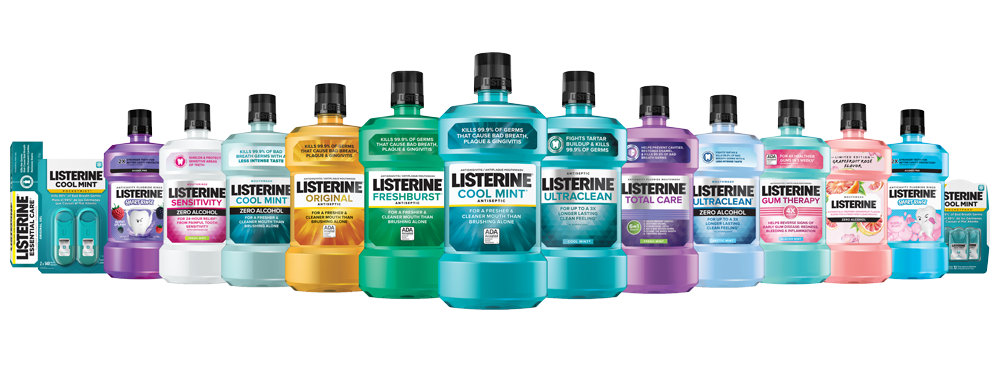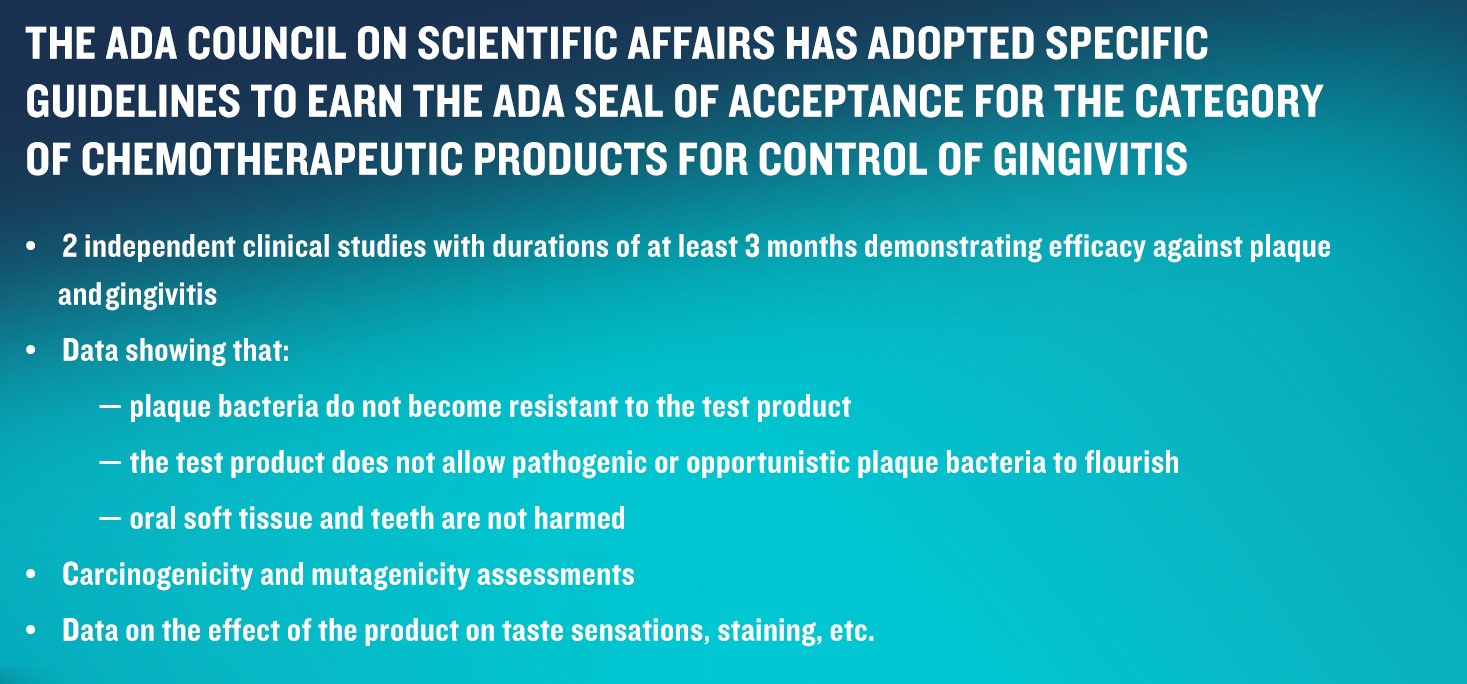

Licensed professionals can receive the latest Listerine clinical information and patient resources.

Kenvue CONDUCTS DHCP-POWERED CLINICAL RESEARCH
Dental research is nothing new. Almost every oral health brand runs some form of research to claim product safety and verify efficacy. Over the last 20 years, Kenvue alone has conducted fifteen 6-month studies with the involvement of over 4166 subjects, and ten 3-month studies involving 2331 subjects.
What is new, however, is the approach designed and taken by Kenvue in a recent clinical study. By conducting research at an ADA-qualified site and by engaging daily dental health care professional (DHCP) supervision Monday through Friday for 12 weeks, this clinical trial helped to ensure the best possible supervision standards.
SECURING THE RESEARCH SITE 
Although Kenvue developed the criteria and controls of the study, placing it in an independent clinical research facility was critical to the credibility of the outcomes.
In choosing the testing site, Kenvue made the decision to follow the strict criteria that meet ADA-accepted testing-site guidelines. For the qualification evaluation, a select team of dental experts inspected the facility, reviewed the accuracy of data collection procedures, and determined the experience and training of directors and staff. Once the testing site met these strict criteria and only then, did it earn qualified status.

ONLY FIVE SITES ARE QUALIFIED UNDER ADA GUIDELINES
Currently in the United States, there are only 5 independent research sites qualified under the ADA Independent Research Testing Site Program guidelines. For the recent clinical trials, one of these sites was chosen by Kenvue to conduct the study. Because the research was done exclusively at an external clinic, the data collected offers an unbiased perspective into the benefits of a comprehensive oral routine that combines brushing and flossing with the use of mouth rinse.
FOLLOWING ADA STANDARDS 
To ensure that the results are grounded in fact and measured data, Kenvue has always maintained a strict adherence to the standards set forth by the American Dental Association—as well as the guidelines provided by the US Department of Health and Human Services (HHS).
ADA SEAL OF ACCEPTANCE.
THE SYMBOL OF TRUST.

The ADA Seal of Acceptance has been the leading mark of dental product safety and efficacy for 90 years AND HAS STRICT GUIDELINES THAT MUST BE ADHERED TO BEFORE THE ADA SEAL IS AWARDED.

GOOD CLINICAL PRACTICE GUIDANCE 
Another important guidance tool for dental research is The Good Clinical Practice (GCP) guidance, published by the HHS and the FDA. GCP is a highly respected international ethical and scientific quality standard used in clinical trials.
WHAT GCP MEANS FOR ORAL HEALTH RESEARCH
Following GCP guidelines provides assurance that data and reported results are credible and accurate. It also ensures that the rights, integrity, and confidentiality of trial subjects are respected and protected, and that their safety and well-being are protected as well.

At the onset of the clinical trial, a dental prophylaxis and baseline examinations, including oral soft tissue tolerance and probing depths, were performed. After establishing an equal standing in oral hygiene, the 156 subjects were randomized into four distinct groups:
- Rinse with a control mouthrinse containing 5% hydroalcohol
- Rinse with LISTERINE® COOL MINT® Antiseptic
- Professional flossing by a dental hygienist
- Self-flossing under supervision
All groups were required to brush with fluoride dentrifice prior to using their assigned regimen. Once daily, for 5 days per week, all subjects in all four groups performed their first daily use of the assigned regimen on the site under direct hygienist and dental expert supervision.

After flossing instructions were given and subjects demonstrated competency, the subjects performed the second daily hygiene regimen unsupervised at home. Follow-up assessment were performed at the 4th and 12th weeks of the study. As a result of this, the data proved that a complete routine of brushing, flossing, and rinsing with LISTERINE® Antiseptic is superior to brushing and flossing for plaque and gingivitis control.
Dr Mary Lynn Bosma said this about the study: “These findings indicate and lend further support to the essentiality of twice-daily rinsing in your oral hygiene regime of brushing and flossing.” Having these data to share with dental professionals not only helps them make evidence-based clinical decisions, but it also instills confidence that adding LISTERINE® Antiseptic to a patient’s oral hygiene regimen could greatly reduce plaque build-up and gingivitis.

PROTOCOLS, PRECISION & PROOF, THE Kenvue WAY
As a company, Kenvue believes that quality products should always come with the most accurate and credible clinical proof. New findings like the ones revealed in this study can lead to collaborations with the dental community that drive reinformed comprehensive hygiene practices.
Study protocols are designed to secure quality in every stage of the product research and reporting process. Quality and responsibility are within Kenvue's core tenets. Most importantly, guidelines serve as a guarantee in the safety of the participants in the study. Thanks to the strict standards in establishing clinical trials and the results they produce, dental health care professionals can be confident in the credibility of these data with respect to both the outcome and the collective experiences of the test subjects. The hope is that continuous, innovative, and robust research practices will lead to better oral health outcomes.
As a reminder, whenever you are reviewing dental research, be sure to check whether ADA guidelines were followed at testing locations. This will help you make the kind of evidence-based decisions, backed by science, that are in the best interest of your patients.
*Contact the ADA for more information on the ADA Seal of Acceptance Program and to obtain Seal guidelines.


All Fields required, unless otherwise indicated
Personal Information
Step 1
Will be used as your user name
By submitting your information above, you agree that the information you provide will be governed by our site's Privacy Policy.